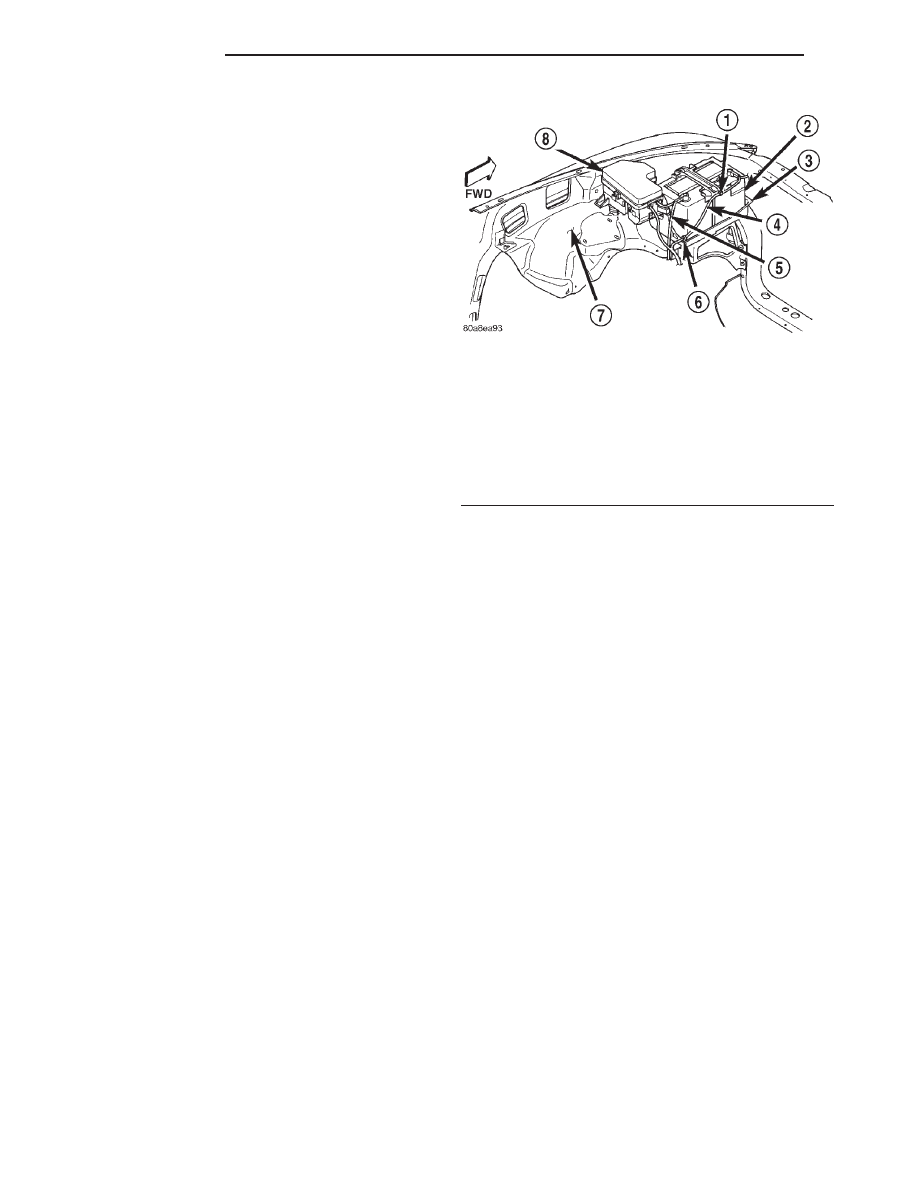Dodge Dakota (R1). Manual - part 310

REMOVAL
(1) Disconnect and isolate negative battery cable.
(2) Remove cover from Power Distribution Center
(PDC) (Fig. 18).
(3) See fuse and relay layout label affixed to
underside of PDC cover for starter relay identifica-
tion and location.
(4) Remove starter relay from PDC.
INSTALLATION
(1) See fuse and relay layout label affixed to
underside of PDC cover for proper starter relay loca-
tion.
(2) Position starter relay in proper receptacle in
PDC.
(3) Align starter relay terminals with terminal
cavities in PDC receptacle.
(4) Push down firmly on starter relay until termi-
nals are fully seated in terminal cavities in PDC
receptacle.
(5) Install cover onto PDC.
(6) Reconnect negative battery cable.
Fig. 18 Power Distribution Center
1 - CLIP
2 - BATTERY
3 - TRAY
4 - NEGATIVE CABLE
5 - POSITIVE CABLE
6 - CLIP
7 - FENDER INNER SHIELD
8 - POWER DISTRIBUTION CENTER
8Fa - 22
STARTING
R1
STARTER MOTOR RELAY (Continued)